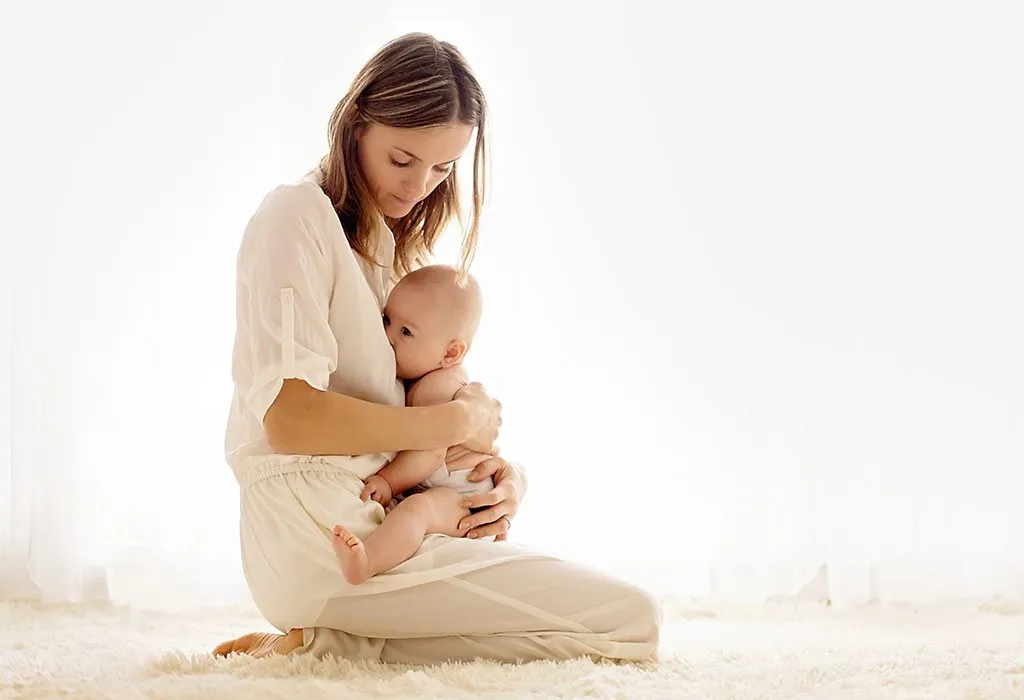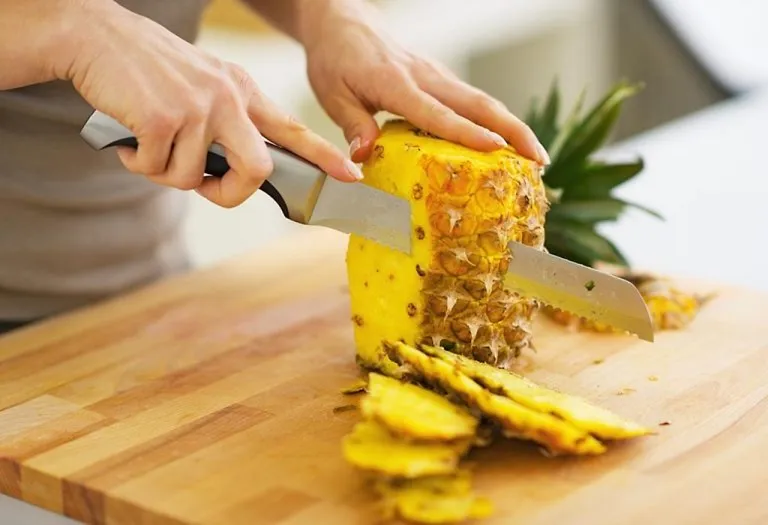Breastfeeding With Small Breasts: Concerns & Tips

Bringing a life into this world is not easy and as a new mother, you should be proud of yourself for giving birth to your bundle of joy. Congratulations, new mom, and welcome to a year of sleepless nights, cleaning the mess, and a whole lot of enjoyment. Motherhood is one of the best phases of life and you’re going to have a wonderful time bringing up your little one. But like every new mother, you are going to have certain doubts about your capability as a mother. You must be having certain doubts/questions regarding breastfeeding your baby, more so, if you have small breasts. You may feel that if you have smaller breasts, then you won’t be able to nurse your baby for a long time, but should you let your breast size come in the way of enjoying motherhood and the nursing phase? Maybe not! Read on to learn more about breastfeeding with small breasts.
In this article, let us clear some common doubts regarding breast size and its impact on breastfeeding! Know more about breastfeeding with small boobs.
Does Breast Size Matter When Breastfeeding?
The simple answer is, no. The size of your breasts won’t affect your ability to breastfeed your baby in any way. The size of the breasts is different in women who are not pregnant owing to the differences in fat content present in the breasts. The tissues which produce the breast milk are laid only after the woman gets pregnant, so they are not characteristic of the size in any way. While the breasts may increase in size during pregnancy, you might still be worried that they are not big enough to nurse your baby. But what you must know is that having smaller breasts means that you have a fewer amount of fat in your breasts and not that you have less amount of milk-making tissue. Therefore, women who have small breasts are more than capable of being able to feed their child with a healthy supply of milk.
Do Small Breasts Make Enough Breast Milk?
As mentioned above, having smaller breasts means that you have a lesser amount of tissues in your breasts, which do not affect the milk-making capabilities in any way. The tissues which produce breast milk are laid only after the woman gets pregnant and it is this which causes an increase in size (1). Therefore, the size of the breasts does not indicate the milk-making capabilities in any way, so you will be sure to make the required amount of milk for your baby regardless of the size of your breasts.
What Changes Do Your Breasts Go Through to Prepare for Breastfeeding?
Your breasts, like most other parts of your body, go through a range of changes during pregnancy and even after you give birth to your baby. They will increase in size and appear to be fuller and larger in a short time. The growth won’t stop after you deliver the child- you might observe that they grow for a couple of weeks after the baby is born. The initial growth during pregnancy occurs because of the change in eating habits and the fact that the tissues which are supposed to be making the milk are being laid within the breasts. The size changes continue after delivery because they will be adjusting the production of milk according to the needs of the baby, and this growth will stop after a couple of weeks. You may notice the changes quickly, or might not notice them at all- in any way, you will definitely be able to breastfeed your child regardless of the size of your breasts.
What About the Storage Capacity of the Breast Milk?
Larger breasts can hold more milk at any given time compared to smaller ones. So you might have to feed your child more often during his time of growth.
How Often to Breastfeed With Small Breasts?
You will have many questions regarding small breasts and breastfeeding, and one prominent question that you will have if you have smaller breasts will be how often you should breastfeed your child. If you have smaller breasts, you should try to feed your child more often. You can choose to feed him on demand, rather than setting timings for breastfeeding him. For instance, if he cries when he is hungry, feed him. Even if you need to feed him every hour, do it because that way your child will get adequate amount of milk.
Breastfeeding Positions for Women With Small Breasts
You can feed your child in any position in which both of you are comfortable, including the natural nursing position (2).
Tips for Breastfeeding With Small Breasts
Even though breastfeeding is generally easier with smaller breasts, you might still have a few difficulties initially. Here are some tips to help you navigate through those challenges:
- Speak out to your doctor about your concerns in this matter, she will be able to help you and put your mind at ease.
- You can try using the V-hold rather than the C-hold, as the C-hold was designed for larger breasts. Do keep your hands out of the latch, though.
- Ensure that you feed your child at least three times a day, and help him latch on correctly.
- Use both breasts while breastfeeding it will help the baby get more milk while feeding.
- Check whether your baby is getting enough breast milk, and always keep an eye on his wet diapers.
- Always take him to the doctor for the scheduled appointments, as it can reassure you that the baby is growing fine. The doctor keeps track of the growth of the child, and if he gains weight consistently, it is an indication that you are feeding him enough.
- You can also join a support group of similar women for advice and help on those simple doubts you have.
- If you ever have any worry, call the doctor and talk to her about your problem.
When Do You Need to be Concerned?
If you are breastfeeding with smaller breasts and your baby is not gaining enough weight and is dehydrated, then you must consult a doctor. Also, if your baby’s urine count is less than 6 a day, in such cases, you should visit a paediatrician and a lactation consultant.
What About Breastfeeding After Breast Surgery?
If the procedure involved damage or removal of the milk ducts of the breast, it might result in low milk production. You might still be able to breastfeed, though – you can consume supplements, and continue breastfeeding your child after consulting with the doctor.
When to Consult a Doctor
It can be worrisome if there are no noticeable changes in breast size during pregnancy or the first week after giving birth. This could suggest issues such as lactation failure, a genuinely low milk supply, or hypoplastic breasts (characterised by insufficient glandular tissue), which might affect the ability to breastfeed effectively. Nevertheless, some women who experience no breast changes during pregnancy or postpartum may still have a normal milk supply. If you have concerns, it is advisable to consult with your doctor.
FAQs
1. Can wearing a breast pump help with milk production if I have small breasts?
Using a breast pump can help stimulate milk production and ensure your baby gets enough milk. Regular pumping can be particularly useful for mothers with small breasts to maintain a healthy milk supply.
2. Does having small breasts affect the baby’s latch?
Small breasts can sometimes make achieving a proper latch more challenging, but with the right techniques and support, most mothers can successfully establish a good latch. Consulting a lactation specialist can be helpful.
3. Can hormonal changes during pregnancy affect breast size and milk production?
Hormonal fluctuations can influence breast development and milk production. Even if breast size does not increase significantly, hormonal changes often still enable the breasts to produce enough milk.
4. Are there any dietary or lifestyle changes that can help increase milk supply for women with small breasts?
While breast size does not directly impact milk supply, maintaining a balanced diet, staying hydrated, and managing stress are important factors in supporting milk production for all mothers, including those with small breasts.
This was all about nursing with small breasts. Small breasts do not indicate the inability to breastfeed, it simply means that you have less fat on your breasts. However, you need to monitor your milk production with the help of the doctor to ensure that your child is getting enough milk while feeding.
References/Resources:
1. How Breastmilk is Made; Stanford Medicine; https://www.stanfordchildrens.org/en/topic/default?id=how-breastmilk-is-made-90-P02635
2. Breastfeeding positions; Mayo Clinic; https://www.mayoclinic.org/healthy-lifestyle/infant-and-toddler-health/in-depth/breast-feeding/art-20546815
3. Lactation; Cleveland Clinic; https://my.clevelandclinic.org/health/body/22201-lactation
4. Arbour. M, Kessler. J; Mammary hypoplasia: not every breast can produce sufficient milk (Journal of Midwifery & Women’s Health); National Library of Medicine; https://pubmed.ncbi.nlm.nih.gov/23870298/
5. Flat and Inverted Nipples; Cleveland Clinic; https://my.clevelandclinic.org/health/diseases/25118-flat-and-inverted-nipples
6. Low Milk Supply; La Leche League; https://lllusa.org/low-milk-supply/
7. How Your Body Prepares For Breastfeeding; American Academy of Pediatrics; https://www.healthychildren.org/English/ages-stages/prenatal/delivery-beyond/Pages/How-Your-Body-Prepares-For-Breastfeeding.aspx
Also Read:
Breastfeeding With Flat or Inverted Nipples
Tips for Breastfeeding with Large Breasts
Myths & Facts About Breastfeeding Your Baby
One Breast Produces More Milk Than The Other: What to Do?
Was This Article Helpful?
Parenting is a huge responsibility, for you as a caregiver, but also for us as a parenting content platform. We understand that and take our responsibility of creating credible content seriously. FirstCry Parenting articles are written and published only after extensive research using factually sound references to deliver quality content that is accurate, validated by experts, and completely reliable. To understand how we go about creating content that is credible, read our editorial policy here.
























